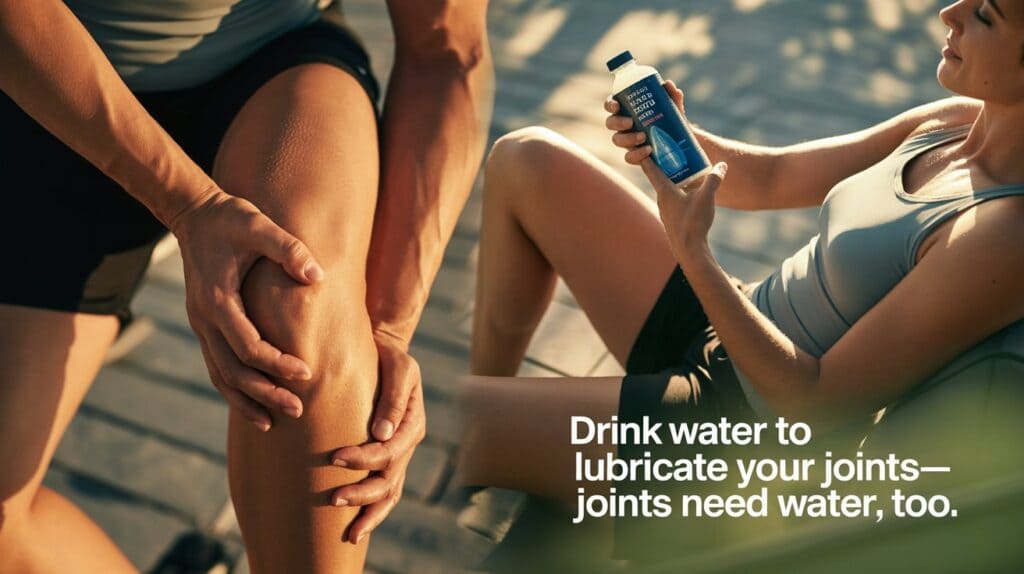
Introduction
Joint pain is a widespread condition that affects millions globally, often stemming from chronic illnesses like arthritis, osteoporosis, or autoimmune disorders. As the seasons change, many people report noticeable differences in their symptoms, particularly during summer. While some individuals experience relief during warmer months, others notice their joint discomfort worsens due to heat and humidity.
Understanding how summer heat affects joint pain is crucial for managing symptoms effectively. In this comprehensive article, we explore the advantages and disadvantages of summer weather for people suffering from joint issues. We also include scientific insights, SEO-friendly keywords, practical tips, and medical studies to help readers make informed lifestyle choices.

The Science Behind Joint Pain and Weather
The human body is sensitive to external factors such as temperature, barometric pressure, and humidity levels. According to a 2020 study published in the British Medical Journal, fluctuations in weather patterns can trigger joint stiffness, swelling, and pain in arthritis patients.
Why Weather Affects Joints:
- Barometric Pressure: Lower pressure often causes tissues to expand, putting pressure on joints.
- Temperature: Cold can stiffen joints, while excessive heat may cause inflammation.
- Humidity: Increased moisture in the air may aggravate swollen joints and muscle fatigue.
Source: Wikipedia – Weather and Pain
Advantages of Summer Heat for Joint Pain Sufferers
Many patients report feeling better during summer months, and science supports several physiological reasons for this trend.
✅ 1. Improved Blood Circulation
Warm temperatures help dilate blood vessels, enhancing oxygen and nutrient flow to muscles and joints. This can reduce inflammation and promote healing.
🔬 Study: A 2021 review in the Journal of Clinical Rheumatology found that blood circulation improves by up to 30% in warmer climates, contributing to reduced pain in osteoarthritis patients.
✅ 2. Increased Physical Activity
People tend to be more active in summer, participating in outdoor activities like walking, swimming, and biking. Low-impact exercise is crucial for joint health, improving flexibility, muscle tone, and mobility.
Key Tip: Swimming in a warm pool provides resistance training without putting stress on the joints.
✅ 3. Higher Vitamin D Levels
Sun exposure increases Vitamin D production, essential for bone strength and joint function. Deficiencies in Vitamin D are linked to increased joint pain, particularly in rheumatoid arthritis (RA) patients.
☀️ Reference: According to the National Institutes of Health (NIH), Vitamin D deficiency affects over 50% of adults with chronic joint disorders.
✅ 4. Reduced Joint Stiffness
Warmth relaxes muscles and connective tissues, making it easier to move and stretch. This leads to less morning stiffness, particularly in patients with fibromyalgia or inflammatory arthritis.

Disadvantages of Summer Heat for Joint Pain Sufferers
Despite the potential benefits, summer heat is not universally helpful for everyone with joint issues. For some, high temperatures and humidity can actually worsen symptoms.
❌ 1. Risk of Dehydration
Hot weather increases sweating, which may lead to dehydration. Since cartilage in joints requires water to stay lubricated, low hydration can cause friction and inflammation.
⚠️ Note: Dehydration is often overlooked but can significantly worsen joint mobility.
❌ 2. Heat-Induced Inflammation
Some patients experience flare-ups in hot weather due to increased inflammatory responses in the body. This is especially true for those with autoimmune joint disorders.
🔥 Medical Insight: A 2022 article in Arthritis Care & Research notes that prolonged heat exposure can trigger cytokine responses, increasing inflammation markers like CRP and ESR in patients with RA.
❌ 3. Sleep Disturbances
Hot nights can lead to poor sleep quality, which is directly linked to increased pain perception. Lack of sleep lowers the body’s ability to repair tissues and can make joint pain feel more intense.
❌ 4. Medication Sensitivity
Certain medications for joint pain, such as NSAIDs or steroids, can impair the body’s natural temperature regulation, making summer heat more dangerous.
💊 Caution: Always consult your doctor if you’re taking medications and experiencing dizziness or overheating.

Comparative Chart: Pros vs. Cons of Summer Heat on Joint Pain
| Benefits | Drawbacks |
|---|---|
| Improves blood circulation | Dehydration reduces joint lubrication |
| Encourages physical activity | Excessive inflammation in some conditions |
| Boosts Vitamin D levels | Poor sleep due to heat |
| Reduces stiffness in joints | Sensitivity to medications and flare-ups |

Tips to Maximize Benefits and Minimize Risks
To make the most of summer’s potential advantages while avoiding its pitfalls, here are some science-backed tips:
🌿 Stay Hydrated
Drink at least 8–10 glasses of water daily, and consume electrolyte-rich foods like cucumbers, oranges, and watermelon.
🏊 Opt for Low-Impact Exercises
Try aquatic therapy, yoga, or tai chi, which are gentle on the joints but still improve mobility and circulation.
🧴 Protect from Sunburn and Heatstroke
Wear light, breathable clothing, apply sunscreen, and avoid direct sun exposure during peak hours (11 am – 3 pm).
💤 Improve Sleep Hygiene
Use a fan, cooling mattress, or air conditioning to regulate night-time temperature and get restful sleep.
🧘 Incorporate Anti-Inflammatory Diet
Eat foods rich in omega-3s, antioxidants, and fiber, such as salmon, berries, olive oil, and leafy greens.

Latest Medical Research on Weather and Joint Pain
Several recent studies have deepened our understanding of how seasonal changes affect joint health:
- A 2023 study from Harvard Medical School revealed that patients aged 50+ reported fewer joint flare-ups when exposed to moderate summer temperatures but experienced worsening pain when temperatures exceeded 35°C (95°F).
- A meta-analysis in The Lancet Rheumatology (2022) concluded that joint inflammation levels increase with both extreme heat and cold, highlighting the importance of climate moderation.
- Research from Johns Hopkins Arthritis Center emphasizes that weather alone doesn’t cause arthritis, but it can modulate symptoms, especially in pre-existing joint conditions.
📚 Source: The Lancet Rheumatology
Conclusion
Summer heat presents a double-edged sword for individuals suffering from joint pain. While warmer temperatures can enhance mobility, reduce stiffness, and boost Vitamin D levels, excessive heat and humidity may exacerbate inflammation, increase dehydration, and disturb sleep—thereby intensifying symptoms.
The key lies in personalized management, recognizing how your body responds to heat, and adapting your lifestyle, diet, and activity levels accordingly. With the right precautions and knowledge, summer can be a therapeutic season for joint pain sufferers rather than a burden.
Key Takeaways
- Summer heat can both help and harm joint pain sufferers depending on individual health and environment.
- Benefits include increased circulation, better mobility, and higher Vitamin D levels.
- Drawbacks include dehydration, inflammation, and poor sleep.
- Staying hydrated, avoiding overexertion, and monitoring temperature exposure are essential for symptom control.
References
- Harvard Medical School. (2023). Temperature and Arthritis Flare-Ups.
- The Lancet Rheumatology. (2022). Seasonal Impact on Joint Inflammation.
- National Institutes of Health (NIH). www.nih.gov
- Arthritis Foundation. www.arthritis.org
- Wikipedia. Weather and Pain








